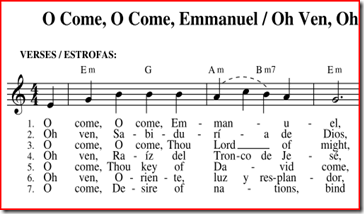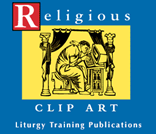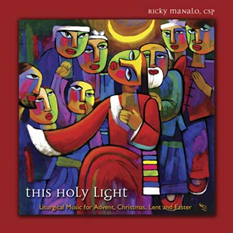A few months ago Catholic choir directors and liturgy teams had the difficult task of picking a new or revised mass setting based on the promulgation of the 3rd Roman Missal. The new changes took affect on the first Sunday of Advent, November 27th, 2011. Looking back, I now realize this was quite a momentous event in the history of the Catholic Church.
I went to various workshops in Sacramento and San Francisco sponsored by Catholic music publishers and our local diocese in order to be ready and have the tools necessary to make an informed decision on a new mass setting. Our Office of Worship for the Diocese of Sacramento suggested that we pick a mass setting and stick with it for at least six months in order for our assemblies to familiarize themselves with the new text. They also “suggested” that all the parishes in the Dioceses of Sacramento pick one common mass setting that we all would know and be able to sing…that mass setting was (drum roll), The Heritage Mass by Owen Alstott.
Now I think that was a great idea to have one mass setting that all the parishes would be comfortable singing—but myself and many of my choir director friends thought it might be easier for our assemblies to learn the new revised text singing a completely new mass setting verses one that was already in their heads. To prove my point, I had the pleasure of going to a concert/workshop put on by David Haas / GIA Publications in Folsom California a few months ago. In the workshop, he sang through his revised setting of Mass of Light and then sang through his new mass setting Mass for a New World. Because I already knew Mass of Light, I found myself struggling through the words and revised melodies. Sight-reading Mass for a New World seemed much easier and smoother. There is something about “revising” a piece of music that was already written that just seems to make it a little cumbersome.
What was my criteria for picking a new mass setting to use? First of all, I wanted an interesting theme that was neither boring nor to contemporary sounding—not to “folksy” or to ostentatious . I wanted the music to at least have SAB parts available and one or two C instrument parts—a string quartet or brass quartet arrangement would be another plus. Not that I could pull either out of my pocket, but I do occasionally have string and brass players available. It should also be workable with various accompaniments: organ, piano, guitar, etc.
I finally decided upon Mass of Spirit and Grace by Father Ricky Manalo, Oregon Catholic Press. Here is the introduction to this mass setting from OCP”s website:
Serve a variety of musical and cultural styles
Inspired by his Eucharistic hymn "Spirit and Grace," and the role of the Holy Spirit during the Communion rite, this approachable setting can be adapted to fit a number of different ensembles. Plus, enjoy a complete set of verbatim Gospel verses for Sundays, solemnities and feasts—available in a separate special edition.
It’s interesting that one of the things that sold me on this mass setting was the above mention of “verbatim Gospel verses for Sundays, etc.”. I’m still waiting for that “separate special edition” to come out. I was so looking forward to not having to write out a separate gospel verse chant for each weekend…but that is something I need to bring up with OCP.
 The melodies of Mass of Spirit and Grace are typical of Father Manalo. The Holy is majestic and flowing without being pedantic…The OCP recording has an organ accompaniment which sounds great, but I played it on my guitar and it also worked well. There is a traditional refrain/verse Gloria as well as a through-composed version that I chose to use. I’m still not sure if that was the right decision to use, but the beginning of the mass is so music heavy, I decided that would be one place to, for a lack of a better phrase, speed things along. The previously mentioned Alleluia along with the other melodies in this mass setting just seem timeless to me.
The melodies of Mass of Spirit and Grace are typical of Father Manalo. The Holy is majestic and flowing without being pedantic…The OCP recording has an organ accompaniment which sounds great, but I played it on my guitar and it also worked well. There is a traditional refrain/verse Gloria as well as a through-composed version that I chose to use. I’m still not sure if that was the right decision to use, but the beginning of the mass is so music heavy, I decided that would be one place to, for a lack of a better phrase, speed things along. The previously mentioned Alleluia along with the other melodies in this mass setting just seem timeless to me.
There are many new mass settings from WLP, OCP and GIA that I am excited about learning and sharing with our assembly. I plan to write further about them in future blog post. For now, I am happy to say that I am very pleased with my decision to go with Mass of Spirit and Grace and I look forward to five more months of this new edition to the Catholic service music repertoire.









